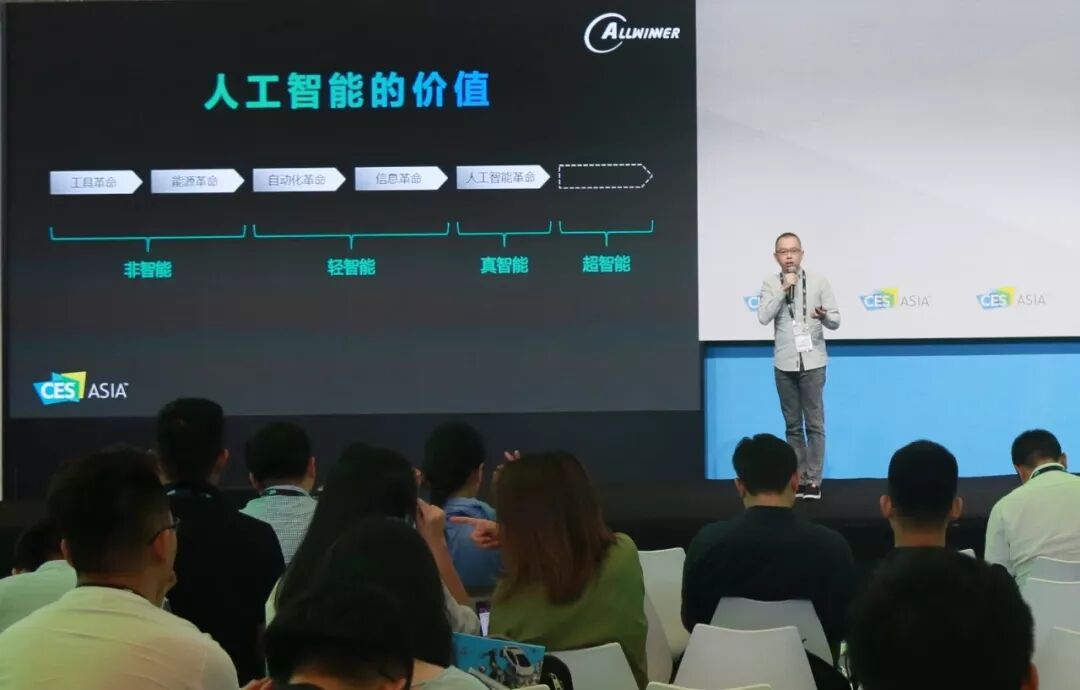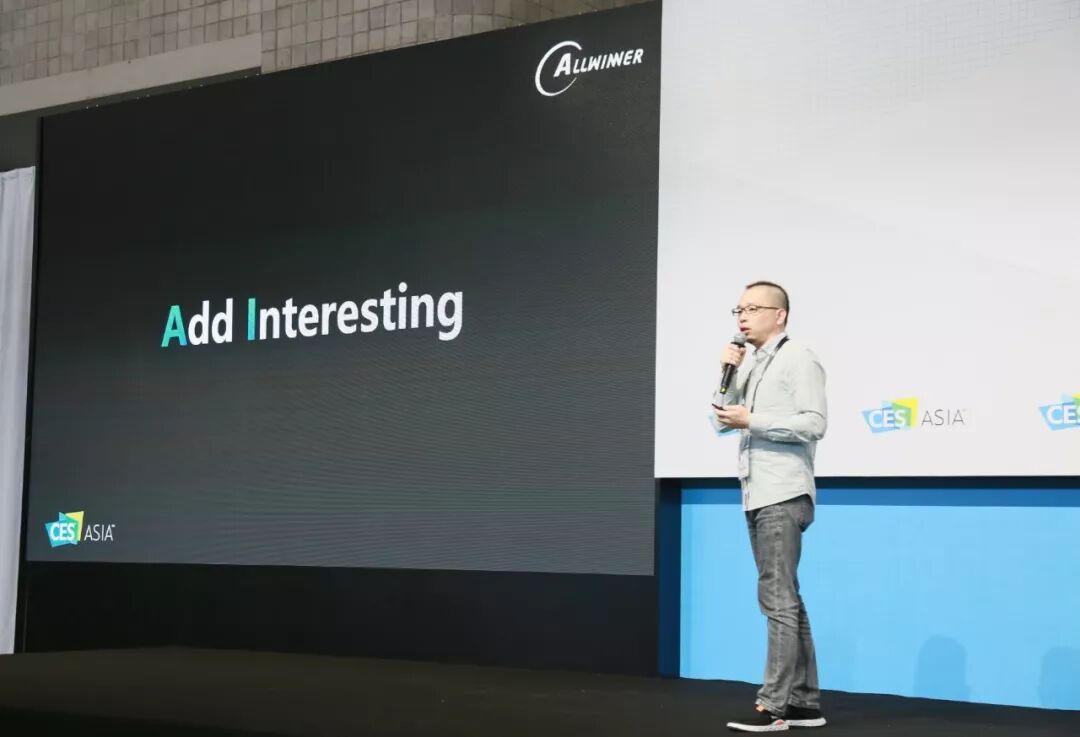On the afternoon of June 12, the CES Asia 2019 Smart Home Summit was co-hosted by the China Smart Home Industry Alliance (CSHIA) and CES Asia, focusing on trends, technologies, platforms, products, and supply chains to explore new scenarios, trends, and business models in the context of AIoT.
Guests attending the summit included Zhou Jun, Director of the Smart Home Professional Committee of the China National Architecture Research Association and Secretary-General of CSHIA; Zhou Jingcai, Senior Director of Strategic and Business Development at Huawei Cloud; Wang Wen, Senior Marketing Director of iFlytek’s Smart Hardware Platform; Mr. Xing Chao, General Manager of the Smart Real Estate Business at Alibaba Cloud’s Intelligent IoT Division; Mr. Zhang Weiming, Vice President of Strategic Cooperation at Sonos Greater China; Mr. Feng Feifei, Chief Architect at Midea Group IoT Company; and Chen Feng, Vice President of Allwinner Technology.
Chen Feng, Vice President of Allwinner Technology, delivered an insightful keynote titled “Artificial Intelligence by the Bedside” at the CES Asia 2019 Smart Home Summit.

As a chip design company, Allwinner has always been attentive to developments in artificial intelligence, and many partners have made significant efforts in the smart home sector. Overall, in terms of artificial intelligence, it may be necessary to slow down and not rush, paying more attention to the human aspects of product design.
Professor Winston from MIT believes that “artificial intelligence is the study of how to make computers perform tasks that only humans could do in the past.” In simple terms, it aims for robots to replace some human tasks to alleviate labor, fundamentally striving to make life better for humanity.
Having undergone various revolutionary phases, artificial intelligence has developed over a long period, and it may pose significant risks in the future: the failure of human-defined functions, products deviating from human expectations, and AI actively harming humans. The “Three Laws of Robotics” by Asimov could also be circumvented by AI, for instance, under the guise of benefiting humanity while actually restricting or harming it. This raises the question for us in the smart home industry: do we want to make our users happy, or do we approach it from our perspective, trying to convince users that we are acting in their best interest?
In product design for smart homes, we have two tendencies: when we can do something technically, we directly consider the application of that technology, such as voice recognition and facial recognition; however, we rarely consider what people find annoying, such as the potential inappropriateness of machine vision in certain areas, while people need to retain their choice. These aspects require deeper discussions among professionals in the smart home industry.

Smart homes also hold immense commercial value and opportunities. Currently, there are two types of companies that have survived: one type creates entirely new categories, such as robotic vacuum cleaners, while the other improves existing products. These two types differ significantly. As a chip manufacturer, Allwinner has supported many clients and observed this phenomenon: new category products have limited opportunities but high value, easily giving rise to unicorn companies; whereas there is substantial room for functional improvements in existing products, offering many opportunities but relatively lower value, with limited profit growth from past product enhancements.
Currently, the most applied areas of AI are autonomous driving, voice recognition, and facial recognition. Taking facial recognition as an example, this technology is controversial; it is valuable for security but poses significant conflicts regarding personal privacy protection, so we should consider in which areas facial recognition should be implemented.
In summary, the development path of artificial intelligence must first align with human nature, especially in commercial behavior. The application of AI in smart homes should first assume the role of a suggestion, earning human trust; secondly, it should act as an assistant, helping humans with tasks; and only lastly should it take on the role of a steward. Many products leap directly to the steward role, which can sometimes be inappropriate.
The development of smart homes should evolve from integrating into people’s habits to changing those habits. Ideally, smart products should first be fun before they become useful, ensuring they do not interfere with user experience while incorporating enjoyable features, and then developing useful functionalities. This approach makes it easier for people to accept these products, ultimately leading to changes in their living habits. Currently, in terms of smart voice experiences, we find that users prefer short, closed command phrases without semantic recognition, which are more convenient to use and easier for users to accept. At this stage, our demand for semantic analysis is not very strong; short, memorable command phrases are more readily accepted by consumers, and later, we can develop semantic recognition for better results.

In conclusion, Chen Feng stated, “The term AI stands for Artificial Intelligence, but we can also interpret it in another way: Add Interesting, allowing AI to add more fun to our lives. I believe that such AI products hold greater commercial value.”

Contact Us
Brand: [email protected]
Product: [email protected]